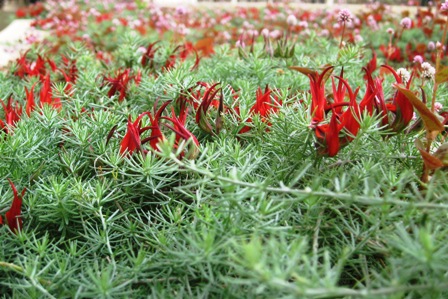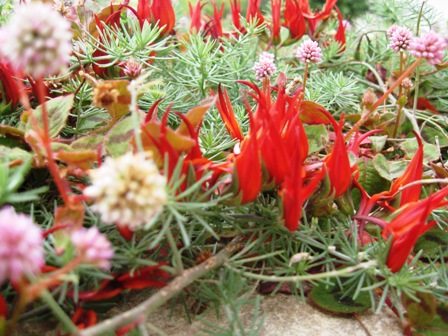When you combine sharp orange/red tubular shaped flowers and silver needled stems with soft pink globe shaped flowers perched on wiry stems 1-2 inches high with variegated leaves, the result is an eyepopping combination! These specimens offer a huge contrast in both the flower and leaf shapes and colors that will minimally be noted by visitors to your garden.
I think the combination of Lotus berthelotii together with Persicaria capitata works perfectly. Don’t you just love the sharp tubular flowers displaying their pageantry wherever they want with the silver, slim leaves cushioning them?
Lotus berthelotii, commonly known as Parrots Beak or Parrots Bill, is grown for its sharp red blooms produced in pairs and silver, needle like leaves. A native of the Canary Islands, with its sprawling, prostrate, trailing habit, it works well as a groundcover or in a hanging basket. Its bloom period is April-May: a good time to take cuttings is June-August. Its silver foliage alone makes it a noteworthy groundcover. It thrives in full or partial sun, well drained soil and is a tender specimen.
Persicaria capitata, commonly known as pink knot-weed, should be treated as an annual in all but the warmest climates. It’s a terrific groundcover that blooms from June-September when deadheaded regularly. Even without the blooms, its cylindric reddish and ochre/green striated leaves make it a worthwhile groundcover. If you’ve already had experience with any of the perennial persicarias, such as affinis, amplexicaulis or polystachya, you know that not only do they add mass and color to a herbaceous border but that they are extremely hardy perennials worth checking out (whose only fault is that they can be invasive if not kept under tight control).




